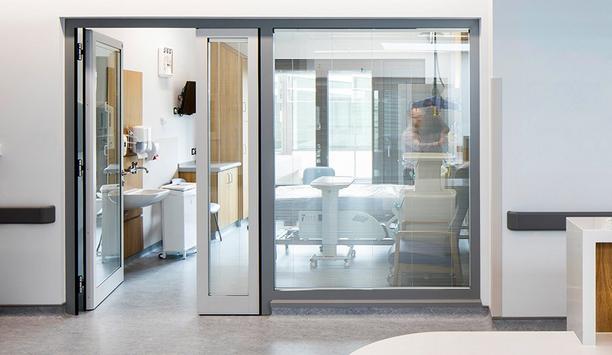Last year saw a 14 per cent increase in fires in England, according to UK Home Office statistics. And while around three million fire doors are installed in the UK every year, a lack of understanding during operation, maintenance and management of fire doors is still apparent. In this article, David Hindle, Head of Door Closer Sales at ASSA ABLOY Opening Solutions UK & Ireland, will address this issue.
Importance of fire doors
Fire doors are often the first line of defense in a fire, yet even after the Grenfell Tower tragedy in 2017, fire door hardware remains a significant area of concern. In May 2018, an Independent Review of Building Regulations and Fire Safety, led by dame Judith Hackitt, have been published.
The review highlighted a range of issues, but the message stood clear, the UK’s current approach to fire safety in buildings is not functioning as intended and a new, holistic approach to fire safety is required.
Review of fire inspections
In all fire inspections, there is a responsibility from the building owner to include checks on the fire doors
In all fire inspections, there is a responsibility from the building owner to include checks on the fire doors. However, there is no legal requirement for them to complete any recommended upgrades or repairs, or to prove that they have done so.
This represents a major problem, as doors that do not perform to the required standard could compromise a building’s safety and put occupants at risk. Ultimately, this could lead to liability being assigned back to the building owner or facilities manager.
Need to maintain fire safety standards
Fire safety is only properly maintained if standards and checks are carried out throughout the lifecycle of the product and building. This is best addressed through regular inspection, maintenance and the replacement of products when required.
A review by the Fire Door Inspection Scheme revealed the most common fire door faults, ranging from missing fire or smoke seals, to unsuitable hinges and damage to the door leaf itself. Any one of these issues can render a fire door useless and can seriously impede a door’s capability to protect people from harm.
Door leaf and frame maintenance
Fire door hardware is often not afforded the attention it requires and is left mismanaged throughout its service life. So what needs to be done to ensure fire door hardware is working as expected?
Naturally, the door leaf should not be damaged, warped or twisted, and it is vital to ensure the fire door closes correctly around all parts of the frame, with no distortion between the stiles, top and frame. Gaps between the door and leaf must not be greater than those specified in the manufacturer’s installation instructions or fire certificate data sheet, typically around 3 to 4mm all the way round.
Importance of door closers
A door closer ensures a fire door returns to its fully closed position and the door seals correctly in the door frame
A door closer ensures a fire door always returns to its fully closed position and makes sure that the door seals correctly in the door frame, when not in use. There are three steps to ensuring these components are working correctly.
First, open the door fully and check that it closes without dragging across the floor. Next, open it to approximately 5-10 degrees and again check that it fully closes, engaging any latch or seal. Finally, check the door closing speed is approximately five seconds from a 90 degree angle, ensuring the door does not slam shut.
Intumescent fire and smoke seals
Fire and smoke seals should be in good condition, fit the full length of the door and be secure in the groove. If seals are badly fitted, damaged or painted, then they must be replaced with exactly the same size and intumescent material that was originally specified. If the smoke seals have to be replaced, then they should be fitted in one continuous length, if possible.
To ensure hinges are in good condition, check for visible wear, dark marks or stains around the hinge knuckle that could indicate wear and impending failure. Hinges must be strong enough to carry the door mass, plus robust enough to work efficiently no matter the level of usage.
The hinges should be firmly screwed into the door and frame, ensuring that the seals at the top and sides of the door are not damaged or missing at any time. Intumescent pads should also be used with hinges, as these are required for the door to get its appropriate fire rating.
Locks and lever handles
To measure a handle’s condition, one needs to ensure the lock lever fully returns to a horizontal position after use
Wiping any metal dust deposits off the handles will help ensure that the latch-bolt is engaging smoothly and completely into the keep during use. To measure a handle’s condition, one needs to ensure the lock lever fully returns to a horizontal position after use.
If it does not, the lever may, at best, need adjusting or lubricating. At worst, it may need replacing, as per the manufacturer’s instructions. Again, ensure the lock case is protected by intumescent material.
Maintaining record of fire door inspection
No matter the component, a record of inspection and maintenance should be kept for all door hardware. Furthermore, those responsible for ensuring the fire safety of a site should encourage others to report any issues with any of the door components.
Faults should be fixed as soon as possible, using the correct and fire-rated components. To check the compatibility of components, always consult the fire certificate data sheet or contact the manufacturer.




















